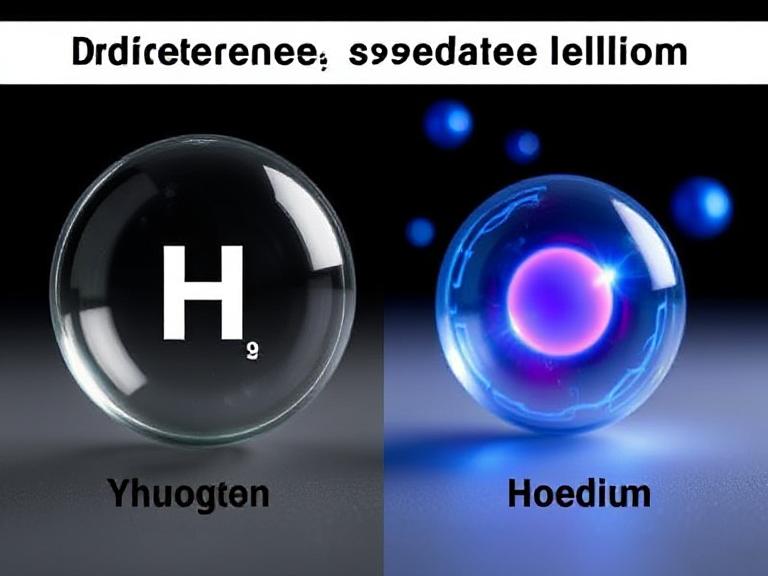Table of Contents
- Introduction
- 1. Atomic Structure and Physical Properties
- 2. Safety and Stability
- 3. Industrial and Commercial Uses
- 4. Manufacturing and Cost Comparison
- 5. Market Supply and Supplier Insights
- YIGAS Group: Your Trusted Gas Supplier
- Conclusion
- Summary Table
Introduction
Hydrogen (H₂) and Helium (He) are the two lightest gases on the periodic table and are widely used in various industries. While they may seem similar at first glance, their physical and chemical characteristics vary significantly. This article explores the 5 key differences between hydrogen and helium and introduces YIGAS Group—a professional industrial gas supplier offering high-quality helium and other gases.

1. Atomic Structure and Physical Properties
- Atomic Structure: Hydrogen exists as a diatomic molecule (H₂), whereas helium is a monoatomic noble gas.
- Density: Hydrogen has a lower density (0.09 g/L) compared to helium (0.18 g/L).
- Chemical Reactivity: Hydrogen is highly reactive and flammable; helium is chemically inert and stable.
2. Safety and Stability
- Hydrogen: Extremely flammable; forms explosive mixtures with air and oxygen. Requires strict safety measures.
- Helium: Non-flammable and non-toxic. Ideal for use in high-safety environments such as medical and aerospace fields.
- Storage: Hydrogen must be stored in explosion-proof high-pressure cylinders, while helium can be safely stored in standard high-pressure tanks.
3. Industrial and Commercial Uses
Hydrogen Applications:
- Fuel cells and renewable energy systems
- Petrochemical processes and hydrogenation
- Inflating weather balloons and aerospace propulsion
Helium Applications:
- Cooling superconducting magnets (e.g., MRI machines)
- Filling party balloons and high-altitude research balloons
- Shielding gas in welding, leak detection, and laboratory environments
4. Manufacturing and Cost Comparison
- Hydrogen: Can be easily produced via electrolysis or natural gas reforming. Production is relatively inexpensive, but safety equipment adds cost.
- Helium: Extracted from natural gas fields. Scarce and expensive due to limited natural sources.
- Price: Hydrogen is generally cheaper than helium in bulk supply, though prices can vary by region and purity.
5. Market Supply and Supplier Insights
- Hydrogen: Widely produced and distributed globally; accessible from many industrial sources.
- Helium: Global supply is limited; relies on extraction from specific natural gas fields in the U.S., Qatar, and Algeria.
- Supplier Tip: Choose certified suppliers like YIGAS Group to ensure safety, reliability, and quality.
YIGAS Group: Your Trusted Gas Supplier

YIGAS GROUP, established in 1993 and reorganized as YJIA GROUP in 2012, is one of China’s largest comprehensive gas suppliers. With over RMB 500 million in assets and 5,000+ clients, the company has built a reliable network across China and overseas.
- Certified with ISO9001 and OHSMS18000 systems
- Products include helium, acetylene, argon, CO₂, and more
- Strong distribution capabilities and safety record
Conclusion
Hydrogen and helium both serve critical roles in science, industry, and energy. Hydrogen offers energy potential but comes with safety risks, while helium stands out for stability and unique cooling applications. Understanding these differences helps you make informed decisions for your business or research needs. For a trustworthy and efficient gas supplier, YIGAS Group offers comprehensive solutions and certified reliability.
Summary Table
| Category | Hydrogen (H₂) | Helium (He) |
|---|---|---|
| Atomic Structure | Diatomic, reactive | Monoatomic, inert |
| Safety | Flammable, explosive with air | Non-flammable, non-toxic |
| Main Uses | Fuel cells, chemical synthesis | Cooling, leak testing, balloons |
| Cost | Lower, widely available | Higher, limited supply |
| Storage | Requires explosion-proof cylinders | Standard high-pressure cylinders |
| Supplier Note | Available from many producers | Limited suppliers, reliability is key |

